Hannibal vs. Rome: STL Kickstarter
Aktuell läuft ein Kickstart für Armeen des Zweite Punische Krieg zum selber drucken.
Hannibal vs. Rome
STL-Files for Small Scale Wargaming Miniatures
The Second Punic War saw the rising Roman Republic pitched against her most dangerous enemy yet. The Carthaginian general Hannibal crossed the alps and attacked the Romans in their home territory. Although Hannibal’s army was outnumbered and cut off from reinforcements he manged to wage war against Rome for more than 10 years. With this range of miniatures you can re-fight this epic campaign. 3d-print your own Roman and Carthaginian armies and lead them into battle on the table top.
Roman legionaries and skirmishers printed in 10mm figure scale
Carthaginian soldiers printed in 6mm figure scale
STL
You will receive STL files, that you can use to print figures on a resin printer. You will not receive any physical miniatures! Our models are most likely to detailed for filament printing, but of course you can always try.
Free test model
If you want to test our models on your printer you can find a free test model at Wargaming3d.
Die freien Testmodelle findet man Hier
Supportless
The miniatures do not need to be supported or come with ready made supports. Just load the files into your slicer and get printing immediately.
There is a wide range of good rules that the figures can be used with. They work well for example with Age of Hannibal, Art de la Guerre or Miletes Mundi and many more.
Figures are mounted together in strips of five (infantry) or four (skirmishers, cavalry) miniatures. For everything but 6mm infantry the strips are designed to be easily cut (or even broken) apart for more customized basing. The 6mm strips are ideal for basing at 40mm.
What do the miniatures look like in which scales?
Our miniatures are optimized for smaller scales. In 6 mm they are much less bulky than any metal casting we know and still stable and above all easy to paint. We like to play this scale very much ourselves! The bigger the scale the more solid the miniatures look. At 10 mm you will see additional details, that are hard to spot in 6 mm, like individual armor scales. Or you can go even bigger to 15 mm. We will provide STL files for figures scaled to 6, 10 and 15 mm.
You can of course also scale up the models to 20mmor 28mm, but at that size the models look more abstract. If you are interested in more detailed 28mm models please contact us. With enough support we can get this range going quickly.
In this video we show you how to base the miniatures easily and individually:
At the Crossroads of History: The Second Punic War
The Second Punic War in the third century BC was the deciding battle between the two major powers of the western Mediterranean at the time. Carthage and Rome had fought each other before in the first Punic war and would fight again in the third. Of the three wars the second was the decisive one. Even after its defeat in the First Punic War, Carthage was still a power to be reckoned with, but after the defeat of Hannibal, the Third Punic War was just the inevitable conclusion of Romes victory.
The Second Punic War was a real crossroads moment in history. Hannibal was a genius tactician, who inflicted several catastrophic defeats on Roman armies. But in the end he was unsuccessful and the Roman Empire went on to dominate much of Europe, North Africa and the Middle East for hundreds of years and still influences us today. Could history have taken another course? Could Hannibal have won the war? Would Carthage have ascended to the same dominant power as Rome did? In this case the history of Europe and the Mediterranean world would have taken a radically different course.
Roman Equites printed in 10mm figure scale
The Legions of the Roman Republic
After throwing off Etruscian rule, Rome became a republic and had conquered most of its neighbors. The Roman legions at the time were organized into units called manipels, that were commanded independently and gave them a lot of flexibility on the battle field. The main force of the Roman army was the heavy infantry. Its soldiers were divided into three different groups according to their experience and equipment: Hastati, Principes and the most veteran Triarii.
Additionally a Roman legion also contained skirmishers (Velites) and cavalry (Equites). The skirmishers would screen the main army before the battle and throw their javelins at the enemy before retreating behind the main battle line. The Equites fulfilled the classical role of ancient cavalry. They would fight the enemy cavalry and try to outflank the enemy army.
Carthaginian Infantry printed in 10mm figure scale
Hannibal’s Army
Hannibal’s army was a mix of different origins and cultures. Soldiers from different regions would fight together in their own units with their own officers and often in their traditional fighting style. The core of the army were the veteran infantry and cavalry troops from North Africa called Lybio-Phoenicians by modern historians to indicate their mixed heritage from Phoenician settlers and ancient Libyans native to North Africa. Most of them were probably not from the city of Carthage itself, but from the surrounding areas.
The big majority of the troops came from other regions. Especially the newly conquered Iberian provinces from where Hannibal started his campaign provided a lot of soldiers. Including heavy infantry with large shields (Scutari), skirmishers (Caetrati) and medium cavalry. Other troops in Hannibal’s army were Balearic slingers and Numidian light infantry and cavalry. The most iconic “soldiers” of the Carthaginian army were of course the war elephants. They most likely used the extinct North African Elephant, which was smaller than the modern African Elephant and it thereforeunclear if they would have worn a turret on their back like Indian war elephants.
Gallic Tribes
During his campaign Hannibal tried to make as many alliances with enemies of Rome as he could and tried to instigate the Italic states and tribes that the Romans had conquered to rebel. One of the most important groups were the Gallic Tribes in modern day France and northern Italy. Some tribes living in Italy were allied to the Romans at the start of the war and fought at their site in some battles, but many of them changed sides after Hannibal’s first victories.
Personal glory was very important to Gallic warriors and accordingly they were known for poor discipline and wild charges. A Gallic war band in full charge, many of the warriors only lightly armored or even naked, but wielding long slashing swords and big shields could strike terror in the hearts of any opponent. More wealthy warriors would also form units of heavy cavalry, equipped with chain mail, big shields and spears.
Italic States
At the start of the Second Punic War the Roman Republic had brought most states of the Italian peninsula under its control, by a mix of diplomacy and military subjugation. The states and city states were considered socii (allies or confederates) and part of their obligations was to provide military forces. Any Roman legion would be accompanied by an at least equally sized force of allied Italics. One of Hannibal’s main strategies was to try to instigate rebellion among these allies of Rome. Some of the southern Italian states did indeed rebel after Hannibal had repeatedly beaten Roman armies and their troops fought on the side of the Carthaginians in some battles.
Italy had been under Greek influence for a long time and most of the soldiers were equipped similar to Greek hoplites: Some form of body armor, greaves and helmet, a big round shield and a spear and/or sword.
Stretch Goals:
We initially had only planed for a few stretch goals. Because of the awesome support of our backers these are all already funded. We have now made a little bit of a bigger plan for additional units. This includes a few additions for the existing armies as well as a complete Hellenic army, that will allow you to explore other conflicts like the Pyrrhic War and the Macedonian Wars. This means that the order of the stretch goals that are already funded might seem a bit random.
Die Kampagne ist bereits finanziert und läuft noch 6 Tage.
Quelle: Hannibal vs. Rome

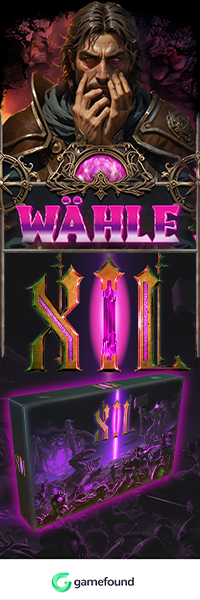




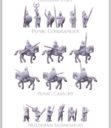





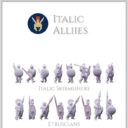
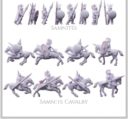



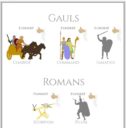

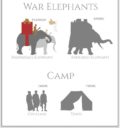
10mm erlebt gerade dank der Verbreitung leistungsstärkerer 3D Drucker zu erschwinglichen Preisen einen echten Boom.
Nun ist hier also auch der historische Sektor dran. Insgesamt sehen die Minis gut aus, aber gerade ich bin mittlerweile von den echt genialen Fantasy Designs einiger Hersteller etwas verwöhnt, daher sehe ich hier kein Highlight. Außerdem würde ich mir zumindest bei der schweren Infanterie als Alternative auch die Warmaster typischen Streifen mit 5 – 6 Soldaten drauf wünschen.